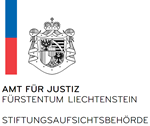Mandate
The reasons for the creation of a state supervisory authority for foundations are complex. The legal institution of the foundation does not have any members, but rather only beneficiaries, which is why institutionalised protections are appropriate. According to the Supreme Court, the independence of the foundation assets, the lack of control by an owner, and the non-existence of partners may – both in the public interest and in the interest of the foundation itself – give rise to the need for efficient control of the foundation’s management where sufficient grounds exist.
Based on the distinction between common-benefit and private-benefit purposes, the law provides for STIFA supervision of all common-benefit foundations.
Apart from the public interest in the pursuit of common-benefit purposes, the justification for the supervision of common-benefit foundations also lies in the fact that the category of beneficiaries for such foundations is typically broad or that there are no tangible beneficiaries. This means that rights of disclosure or control cannot be exercised by beneficiaries in the same way as in the case of private-benefit foundations.
STIFA verifies whether the foundation assets are managed and appropriated in accordance with their purposes, and it decides generally on the basis of audit authority reports whether there is a need to apply for supervisory measures to protect the foundation assets. In all cases, the ordering of specific measures is the responsibility of a judge in special non-contentious civil proceedings.
Private-benefit foundations may elect to place themselves under STIFA supervision. This election must be specified in the foundation deed.
In the case of private-benefit foundations not entered in the Commercial Register, STIFA is authorised to verify the accuracy of notifications of formation and amendment.

